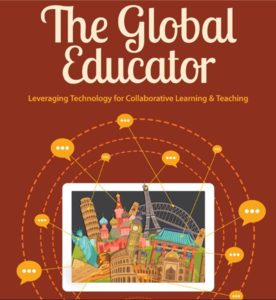My col league, Julie Lindsay, has just published her new book, The Global Educator. When Julie put out the request for input from global educators across the world I was only too happy to oblige.
league, Julie Lindsay, has just published her new book, The Global Educator. When Julie put out the request for input from global educators across the world I was only too happy to oblige.
Marilyn, Australia, says, “I’d like to see all schools in Australia become global learning hubs—places where the process of learning is connected, collaborative and communicated in as many ways as possible, to many interested learners in local, national and global communities, through the use of tools for social learning. Here we are challenged by the availability of reliable connectivity for all global communities, available education hubs for all learners and the proficiency of teachers to enable global and connected learning to take place in their schools. Changes to the traditional thinking behind the delivery of education—the buildings, rooms, the blended learning model, the flattening of classrooms, the pedagogies involved—these are all part of providing a conducive environment for global learning” (Marilyn Snider, @malmade1).
As Marilyn Snider, Senior Global Consultant, Australia, shares with us, “As a global education leader I promote open-mindedness leading to new thinking about the world and a predisposition to take action for change. Taking responsibility for their actions, learners come to respect and value diversity, and see themselves as global citizens who can contribute to a more peaceful, just and sustainable world. Enabling young people to participate in a better-shared future for all is at the heart of global education. In terms of impact, my perspectives of the world infuse my thoughts and ideas on a daily basis. I am more perceptive, more analytical, more understanding. I can see many angles to a story. My input is thoughtfully constructed with attention to identity, cultural diversity, human rights, social justice, and peace with its counter side, conflict resolution.”
Julie Lindsay’s book, The Global Educator, is a collaborative effort and a fine example of social tools for learning in use.
